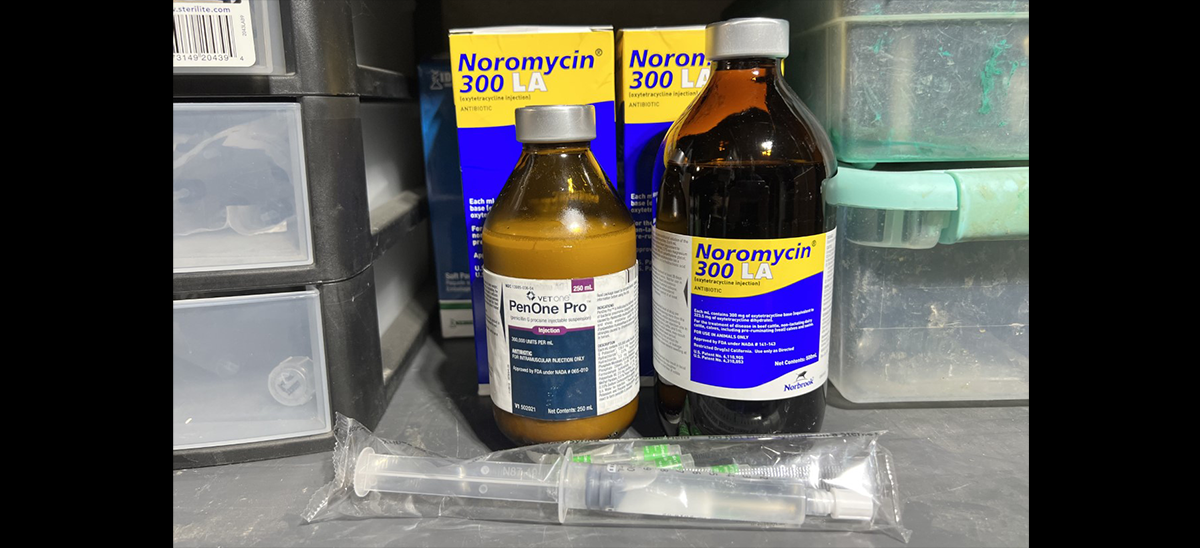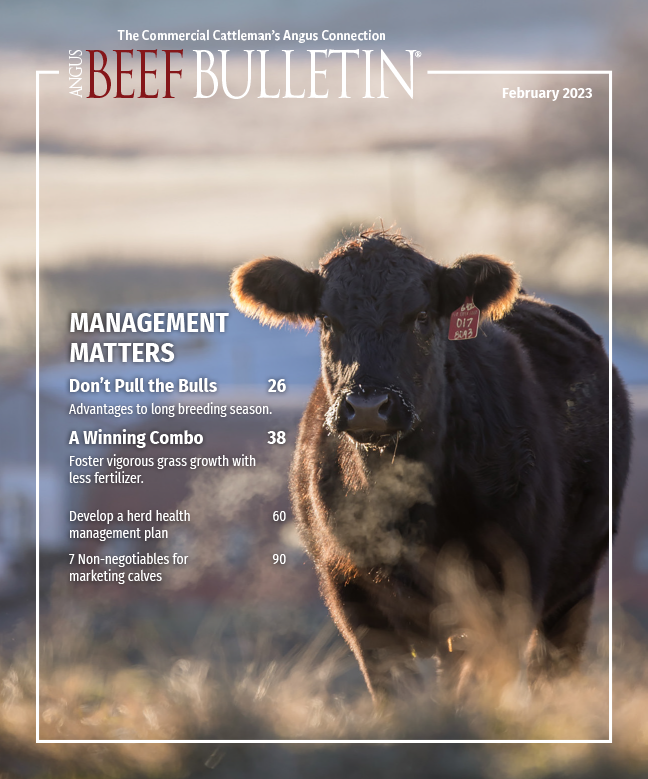
Rx Only
Antibiotics currently available over the counter shift to prescription only this June.
June 11. That’s the day — the day antibiotics will no more be labeled for over-the-counter (OTC) use, says Eric Moore, a third-generation veterinarian now director of technical services for North America at Norbrook. After June 11, antibiotics will be labeled for use by prescription only in accordance with U.S. Food and Drug Administration (FDA) Guidance for Industry (GFI) 263.
Broader effort
“This has been a process that started over 20 years ago,” says Moore, explaining the measure is part of a broader effort by FDA to combat antimicrobial resistance (AMR).
GFI 152 classified antibiotics by risk categories based on their importance to food-animal use and human use, he explains. GFI 209 addressed judicious use of antibiotics, stating the industry wouldn’t use antibiotics for growth promotion and that antibiotics would be administered under the supervision of a veterinarian — by prescription (Rx). The Veterinary Feed Directive then placed drugs intended for use in animal feeds under the supervision of a licensed veterinarian.
“That accounted for about 96% of the over-the-counter antibiotics that were on the market,” says Moore. The logical next step was to take the other 4% of antibiotics available OTC and move them to prescription, and that’s what GFI 263 does.
“You’ll still be able to get the same antibiotics,” says Moore. “We’re not taking any antibiotics off the market; we’re just changing the marketing status of those products.”
After June 11, manufacturers will label and distribute the products as prescription only, and vendors will have to be licensed to sell prescription products.
Product in the system labeled OTC will not be pulled from the shelves, he notes. It will be legal to buy in stores while supplies last or until the product expires (usually within 24-34 months of manufacture).
“If you have product on the shelf or have it in your barn, you can still use it. That doesn’t change,” says Moore. However, eventually, the pathway for accessing antibiotics will change. You’ll need a prescription from a licensed veterinarian to purchase any antibiotics from a licensed vendor.
Get ready
Preparing for the upcoming change is a two-step process, says Moore.
Step 1 is to build a strong veterinary-client-patient relationship (VCPR) with your veterinarian so he or she can help you make sound decisions, says Moore. “Really, the conversation should start out, ‘How can you help me have a program with my herd that doesn’t require me to use antibiotics?’”

Listen in as Eric Moore discusses GFI 263 and the benefits of building a solid veterinarian-client-patient relationship. |
The goal is a healthy herd, and your veterinarian can help build a program to minimize antibiotic use, he explains. Then, with a knowledge of your operation, your veterinarian can write a prescription when it’s needed.
Step 2 is to ask your animal health suppliers if they are going to obtain a pharmacy license to sell prescription products. If they become licensed, you’ll still be able to use them as a supplier with a veterinary prescription.
Moore says he wants to avoid a case where a producer might go to their farm supply store to buy antibiotic to treat a calf with pinkeye, only to find they can’t get the product either because the store doesn’t have a pharmacy license or they don’t have a prescription.
“That turns into an animal welfare issue because we have a calf that’s suffering from pinkeye,” he explains. “That’s a painful disease. We need to get it treated and get it mitigated right away.”
If the product isn’t available or the producer has been unaware and hasn’t made plans for obtaining a prescription under a valid VCPR, there could be an animal welfare issue with that calf.
“We need to make sure we’re planning ahead and getting things prepared,” Moore says.
Silver linings
A side benefit to talking to your veterinarian to obtain the prescription is the insight your veterinarian can provide, says Moore. Your veterinarian can ensure you are using the right product at the right time.
“The number one key to judicial use of antibiotics is preventing the disease in the first place,” Moore emphasizes. “That’s really what you’re talking to a veterinarian about, right? They’re going to have knowledge of what’s going on in your area, different emerging diseases or conditions that you have in your certain geography.”
By taking a holistic approach to analyzing your herd’s health, your veterinarian can help see “those silent robbers,” says Moore. “Those things that don’t blatantly appear to you are things that slowly take profits from you as a producer.”
Instead of managing a crisis at hand, the holistic view puts the pieces of the puzzle (calves with pinkeye, lighter weaning weights, slipping pregnancy percentage) together to identify a common source (poor fly control).
“You may pick up one thing, you may pick up five,” sys Moore says of taking a more holistic approach to herd health. “You may be doing it right, but at least you’re checking the box.”
During the 10 years he was in private practice in central Kansas, Moore says, most rewarding to him in working with clients was to see those small, continual improvements and seeing the herd blossom into a vibrant, profitable, sustainable herd.
“Watching that, that was a big reward for me as a veterinarian,” he says. “Having a veterinarian with a mindset that they’re in it for the long haul with you, is a valued partner to have going down the road.”

